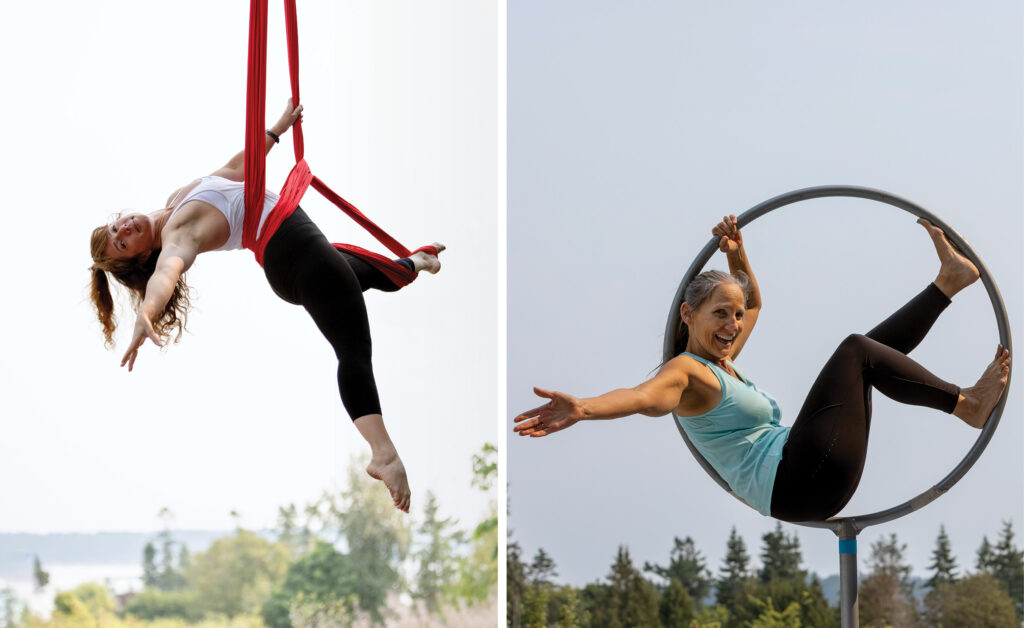by Sherrin Griffin VP, Operations, Sidney SeniorCare –
While on many a dog walk, unquestionably the best part of my day, I’ve noticed that more people, especially seniors, seem to be on the trails with walking poles. Curious whether this was a new outdoor fad, and wondering if there really was any merit to this new mode of walking, I decided to do some investigation … .
Nordic pole walking originated in Finland in the early 20th century as a summer training exercise for cross country skiers. Realizing potential benefits for the amateur strider, pole walking was introduced to the masses by a Finnish company, in cooperation with professional athletes and sports medicine experts. The first poles specifically designed and marketed to fitness walkers were produced by the U.S. company Exerstrider in 1988.
The beautiful simplicity, and affordability, of just two poles, together with decent walking shoes, meant that anyone, anywhere, at any age could take up Nordic pole walking, after learning the basic technique. I discovered that the benefits of this activity are truly impressive for anyone, but they really sing for seniors. In fact, the greatest demographic who commit to the sport are over 55.
Pole walking may just be the most perfect low-intensity exercise around. The specialized poles give symmetrical support and are designed for an efficient walking stride. They are weight bearing on all surfaces, naturally align your spine and target core strengthening. Over 50% more muscles are engaged than regular walking. Pole walking targets arms, abdominals, waist, chest, glutes, hips and thighs.
Walking poles can help improve posture and balance, reduce joint pain, improve overall mood, and promote social interaction; all while enjoying the great outdoors. Older adults have found that walking poles help to reduce load-bearing weight on their knees, hips and spine, decreasing stress on those areas, and are ideal for osteo-arthritis sufferers or those with lower back pain. Pole walking also increases your heart rate at any given pace and burns 20% more calories than regular walking, making it ideal for healthy weight loss. It increases blood flow throughout the entire body and helps to keep blood sugars in a healthy range.
Recent research has shown that pole walking is a promising modality for rehabilitation for those with orthopedic issues such as arthritis, patients with cardiac health concerns, those living with diabetes and peripheral neuropathies, Parkinson’s disease and more. It’s also an ideal way to ease back into activity after surgery. Studies have also proven that pole walking benefits arm lymphedema, a common condition of women treated for breast cancer.
As if that weren’t enough, the accolades go beyond the purely physical to include mental health benefits such as reducing overall tension, stress and anxiety, promoting healthy social interaction and pain management.
When shopping for walking poles, seniors should look for quality one-piece poles sized for their specific height. Anyone with balance issues should stay away from two- or three-piece twist-lock or flip-lock walking poles. One-piece poles are proven to be safer, lighter, stronger, more durable and more user-friendly than flimsy, collapsible poles. All Nordic walking poles have a spike tip at the bottom for walking on grass and trails, covered by a removable rubber boot-tip for gripping sidewalks and pavement. Handle types may vary, but look for poles with ergonomic handles that will not only be more comfortable, but help to modify the intensity of your pace. Staff members at your local sporting goods store should have the knowledge needed to assist you.
With many models priced under $100, pole walking is a cost-effective sport that can have a significant effect on our health and wellness, and keep us moving well into our senior years.




